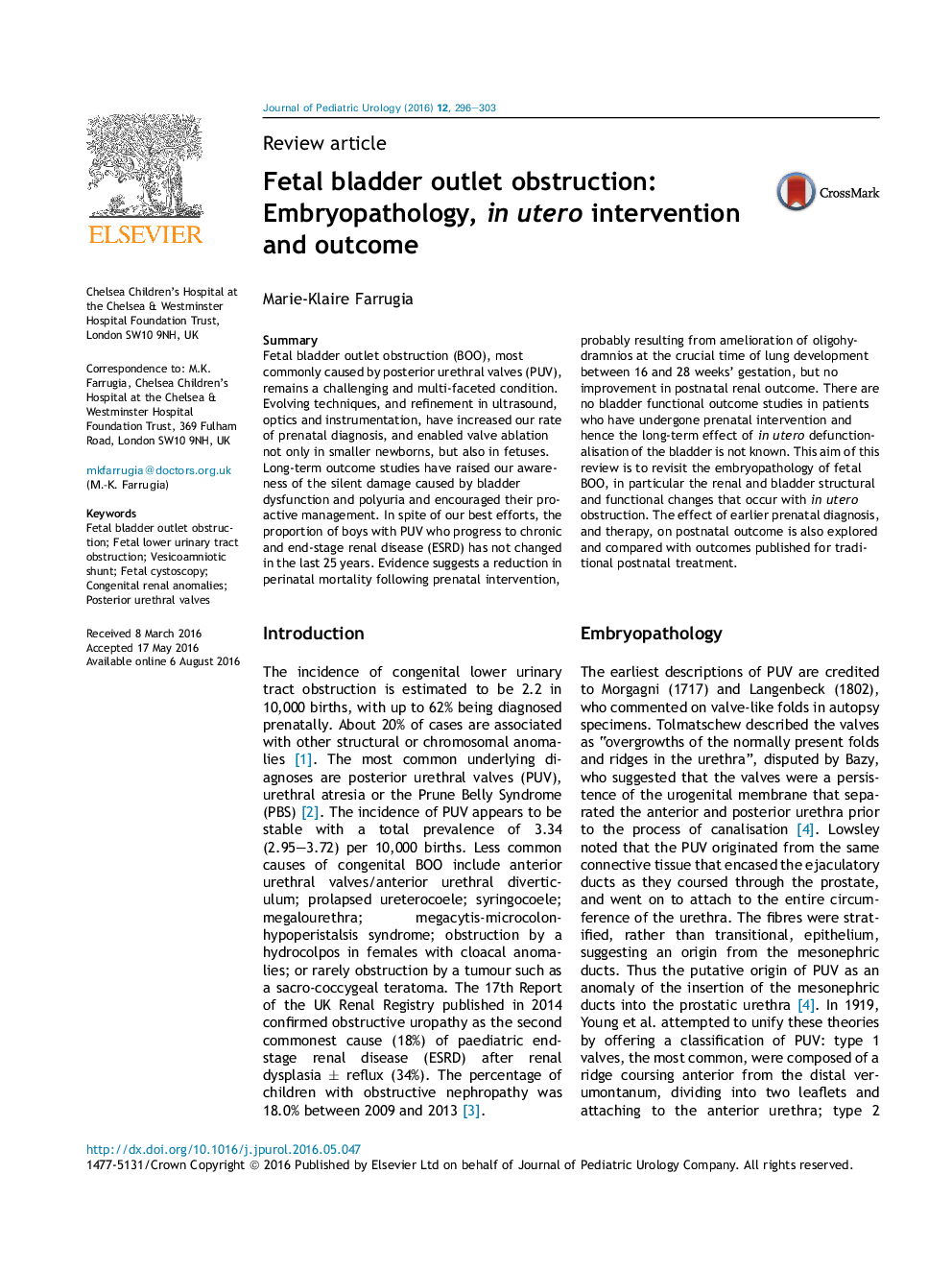| Article ID | Journal | Published Year | Pages | File Type |
|---|---|---|---|---|
| 5718776 | Journal of Pediatric Urology | 2016 | 8 Pages |
SummaryFetal bladder outlet obstruction (BOO), most commonly caused by posterior urethral valves (PUV), remains a challenging and multi-faceted condition. Evolving techniques, and refinement in ultrasound, optics and instrumentation, have increased our rate of prenatal diagnosis, and enabled valve ablation not only in smaller newborns, but also in fetuses. Long-term outcome studies have raised our awareness of the silent damage caused by bladder dysfunction and polyuria and encouraged their proactive management. In spite of our best efforts, the proportion of boys with PUV who progress to chronic and end-stage renal disease (ESRD) has not changed in the last 25 years. Evidence suggests a reduction in perinatal mortality following prenatal intervention, probably resulting from amelioration of oligohydramnios at the crucial time of lung development between 16 and 28 weeks' gestation, but no improvement in postnatal renal outcome. There are no bladder functional outcome studies in patients who have undergone prenatal intervention and hence the long-term effect of in utero defunctionalisation of the bladder is not known. This aim of this review is to revisit the embryopathology of fetal BOO, in particular the renal and bladder structural and functional changes that occur with in utero obstruction. The effect of earlier prenatal diagnosis, and therapy, on postnatal outcome is also explored and compared with outcomes published for traditional postnatal treatment.
